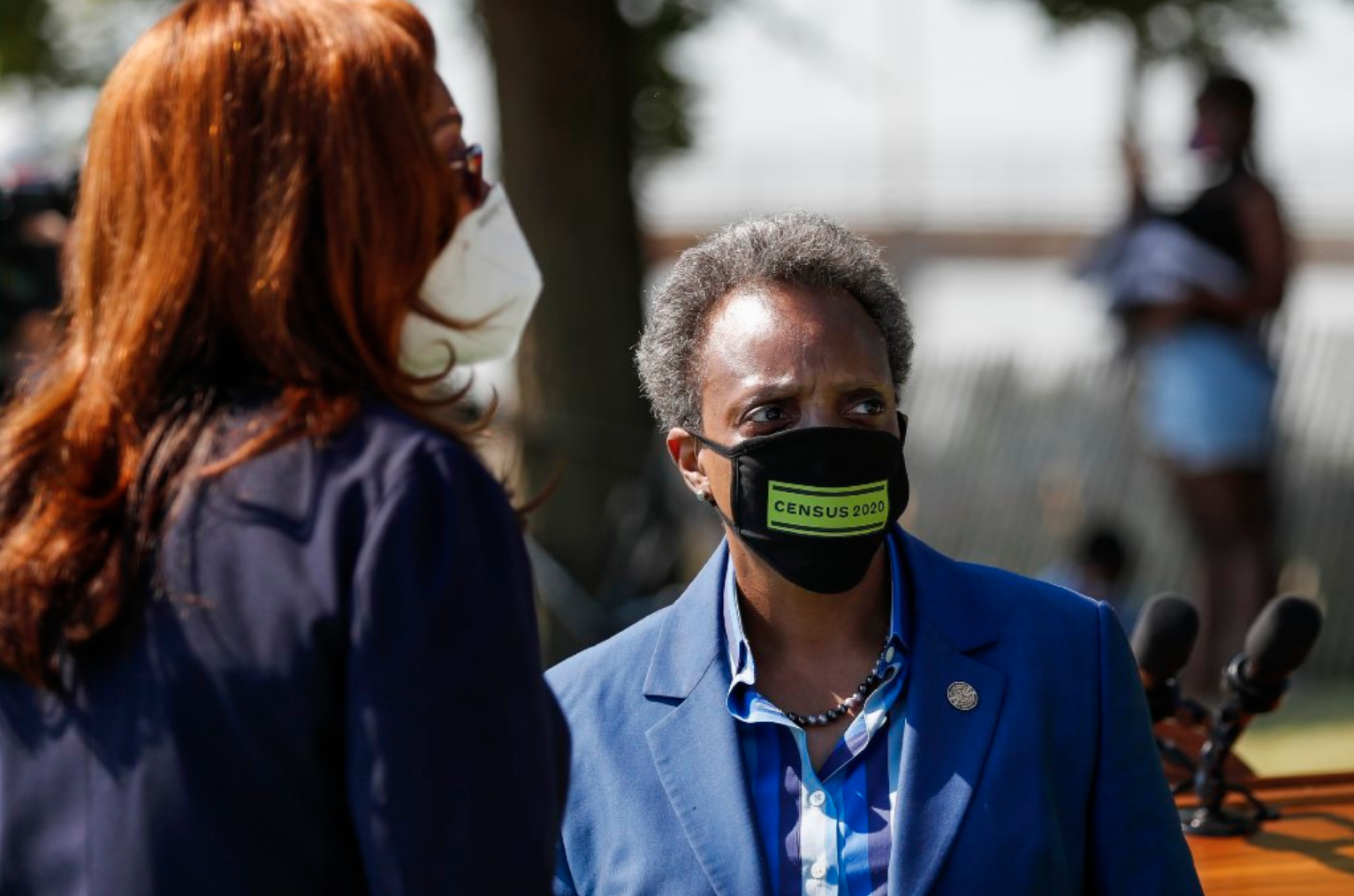Lori Lightfoot is the mayor of Chicago’s silent majority, and she’s proud of it.
The term “silent majority” has a reactionary connotation — after all, it was first used by Richard Nixon to refer to Americans who disapproved of anti–Vietnam War protests. But it can also refer to supporters of any politician who rejects political extremism. In 1996, Bill Clinton was re-elected as a silent majority president by voters turned off by the fanaticism of the Oklahoma City bombing and the Republican government shutdown.
That sounds a bit like Lightfoot’s playbook. According to Crain’s Chicago Business, Lightfoot “has become a political lightning rod on both sides of the aisle during the coronavirus era.” And yet, her most recent approval rating was 75 percent. That poll was taken from May 18 to 22, before the George Floyd protests, but it’s still an astonishingly high number for any politician. (Rahm Emanuel bottomed out at 27 percent.)
“Frankly,” Lightfoot said at the conclusion of a New York Times Q&A this week, “when I’m being attacked from the left and the right, then I’m probably where I need to be.”
Lightfoot has earned those attacks. In recent months, the mayor has stood down two of 2020’s most intemperate protest movements — right-wing maskless Covidiots and left-wing statue-toppling vigilantes.
First, Lightfoot shut up State Rep. Darren Bailey, the grandstanding southeastern Illinois freedom fighter who was forced to leave the State House chamber for refusing to wear a mask. On Memorial Day, Bailey drove 270 miles from Xenia to Chicago to stand in front of Buckingham Fountain — without a mask — and protest Gov. J.B. Pritzker’s stay-at-home order. Lightfoot ordered the police to break up the demonstration.
“[W]hile we respect 1st amendment rights, this gathering posed an unacceptable health risk and was dispersed,” the mayor tweeted. “No matter where in the city you live, no one is exempt from @GovPritzker’s stay-at-home order.”
Then, Lightfoot stood up for Christopher Columbus after protestors spray-painted “BLM” and “genocide” on the Columbus statue in Grant Park, and “killer” on his statue in Arrigo Park. In Boston, demonstrators lopped off Columbus’s head. Before protesters could do it themselves, the city of San Francisco took their Columbus statue off its plinth near Coit Tower and placed it in storage. In contrast, Lightfoot covered our Columbuses with shrouds and guarded them with police SUVs. Preserving the statue, she said, is a way “to try not to erase history, but to embrace it full on… I think that the way we educate our young people, in particular, about their history is to educate them about the full history.” Earlier this year, Lightfoot also refused to change Columbus Day to Indigenous People’s Day citywide, and praised the organizers of the Columbus Day Parade for “[inviting] many people of different backgrounds to participate in what is really a people’s celebration.”
At last Wednesday’s City Council meeting, Lightfoot thwarted the Progressive Caucus left and left. First, she brushed off calls to make Juneteenth a civic holiday, saying it would be too expensive. Then, with the help of Ald. Chris Taliaferro, she buried an ordinance to remove police from Chicago Public Schools by assigning it to the Rules Committee, where ordinances go to die. (“We need security in our schools,” Lightfoot said.)
For all those actions, activist groups like Black Lives Matter Chicago have taken Lightfoot to task.
Lori Lightfoot is just a straight up cop. Just this week she has
1)refused to honor Juneteenth,
2)refused to remove cops from schools,
3)refused to remove statues dedicated to genocide.
There is no "progressive" bone in her body.
We did warn ya'll. https://t.co/59fjvFELTK
— BLMChicago (@BLMChi) June 18, 2020
But, as BLM points out, anyone disappointed by Lightfoot’s political stances now probably wasn't paying attention during the mayoral race. As this magazine has argued before, Lightfoot ran as a reformer, not a progressive, as that term is understood in Chicago politics. Lightfoot called for good government (she favored ending aldermanic privilege) rather than social justice (she opposed rent control). Nor did she run on identity politics. She did just the opposite, which was why she beat more experienced politicians appealing to racial, geographic, or socioeconomic bases.
Like any canny politician, Lightfoot has located herself in the dead center of her constituency’s politics. She's not moving anytime soon, no matter how loud the shouting from both ends of the spectrum.



